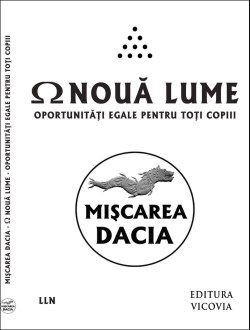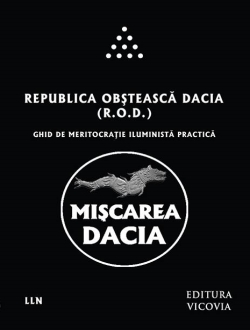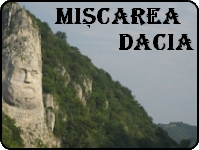Hyperian History Of The World (20th Century, Part 3)
Hyperian History Of The World (20th Century, Part 3)
It wasn’t just science that suffered in the 20th century by being sundered from mathematics and philosophy, but those other two disciplines suffered also. Nietzsche had basically destroyed grand philosophy at the end of the 19th century and 20th century philosophy could barely be called philosophy at all. Rather than construct grand systems to explain reality, as had once been the game of philosophers, many 20th century philosophers wasted their time obsessing over pointless little details such as linguistics, as in the philosophy of Ludwig Wittgenstein, activities which would have baffled the great ancient Greek philosophers.
Some philosophers did however turn their attention to mathematics, but in entirely the wrong way. Rather than use mathematics to explain their philosophy, which would have led them to the truth of reality as Pythagoras had asserted twenty five centuries earlier, instead they tried to use philosophy to explain mathematics.
The idea actually originated with mathematicians who, due to their general philosophical illiteracy, were attempting to explain mathematics in terms of a system of axiomatic logic. The idea was to reduce all of mathematics to a set of simple axioms to which basic rules would apply in order to produce the whole of mathematics. This idea was known as Mathematical Formalism, and its most prominent advocate was mathematician David Hilbert, who set mathematicians the task of reducing all of mathematics to a set of axioms, thus reducing mathematics to a system of man-made logic.
A similar idea was taken up by mathematical philosophers Alfred North Whitehead and Bertrand Russell, who also attempted to reduce mathematics to symbolic logic. Their ‘Principia Mathematica’ of 1913 famously featured hundreds of pages of logical symbols just to prove that 1+1=2.
All of these attempts to reduce mathematics to logic were destroyed in 1931 by logical genius Kurt Gödel with his Incompleteness Theorems. Using strict logic, Gödel proved that any axiomatic system could never produce a system that was both complete and consistent. A system derived from multiple axioms will always involve statements that are true, but that cannot be proven to be so by the system itself.
Gödel’s logic was undeniable, and his work showed definitively that Hilbert’s task could never be accomplished, to the dismay of those mathematical philosophers who had been working on it. However, Gödel’s theorems were drastically misinterpreted, such was the chaotic state of academia. For even mathematicians and philosophers had been infected by the epidemic of empiricism which had taken over the academic world since the takeover of science from religion. As such, these mathematical philosophers were unable to view mathematics in its purest rationalist form, the way Leibniz had viewed it, the way Descartes had viewed it, the way Plato and Pythagoras had viewed it. Instead, they insisted on viewing mathematics as some kind of man-made abstraction, hence their attempts to reduce it to man-made logic. After Gödel showed this could not be done, they concluded that mathematics itself was therefore incomplete and inconsistent.
Yet Gödel’s theorems only applied to the false man-made idea of mathematics which these academics had been using. Ironically, it was the philosopher Wittgenstein, who mainly obsessed with linguistic philosophy, who had a better idea about mathematics when he said that mathematics was only ever tautology. For example, to say that 1+1=2 was to say that 1+1=1+1 or that 2=2, i.e. mathematical statements were only ever stating that a certain thing was indeed that certain thing. Wittgenstein concluded therefore that mathematics was nothing other than empty tautology and could never say anything about reality.
Wittgenstein was correct to reduce mathematics to tautology but was wrong to say that this meant it was ‘empty’. The problem with axiomatic systems, which Gödel had shown to be always incomplete or inconsistent, was that they were based on multiple axioms. It is the very fact of there being more than one axiom which causes these systems to fail. As ever, a lack of pure rationalism was the problem. Leibniz would have immediately invoked the Principle of Sufficient Reason and asked questions such as, why should there be multiple axioms? Why would a consistent, logical system be based on a particular, arbitrary number of axioms?
If we take Wittgenstein’s idea of mathematics being nothing but tautology, we realise that all mathematical statements essentially boil down to the most basic tautology, 0=0. If all of mathematics can be reduced to a single statement, we thus realise the mistake that was made by the mathematical formalists. Their mistake was to insist on multiple axioms. Gödel’s Incompleteness Theorems only apply to systems with more than one axiom. If a system has just one axiom, from which everything else derives, then it can be both complete and consistent.
As ever, the ancient Greek philosophers had been right all along, when they had realised that all of reality had to derive from one single substance, or one single idea, the arche, which Pythagoras had declared to be none other than mathematics itself. Thus we can see the extent to which humanity had severely lost its way. These mathematical formalists had completely the wrong idea about mathematics and even when Gödel showed the absurdity of what they were doing, they still got it wrong by interpreting Gödel’s theorems as showing that mathematics could never be complete or consistent, when in fact it is only their idea of man-made systems of axiomatic logic which had been shown to be this way.
True mathematics must be complete and consistent. An isolated logical system is only ever a subset of true mathematics and, if isolated from the whole, will always contain self-referential statements which are the source of its incompleteness or inconsistency. Metaphysically, these ideas have interesting consequences. As individuals, we are like these subsets isolated from the whole. As such, in isolation, we contain ideas of self-reference and this causes inconsistency, incompleteness, errors or gaps in the system and it is these very errors, or gaps, which allow an individual to have free will in a universe which otherwise seems deterministic or machine-like.
We are all part of the whole, which is complete and consistent. Yet, as individuals, we fall foul of Gödel’s incompleteness theorems, which allow us the free will to explore reality. As we do so, we eventually realise that we are both individuals and the collective and, when we realise this, we become complete and consistent.
To understand this requires a unification of science, mathematics, philosophy, metaphysics, psychology and many other subjects into one single system. Unfortunately, the fracture of mainstream 20th century academia was instead leading to absurdities far removed from the truth of reality. But behind the scenes, others were working on the truth, in the tradition of the great ancient Greek philosophers and rational geniuses such as Descartes and Leibniz. Hope was not lost.
Brice Merci ‘ hyperian












